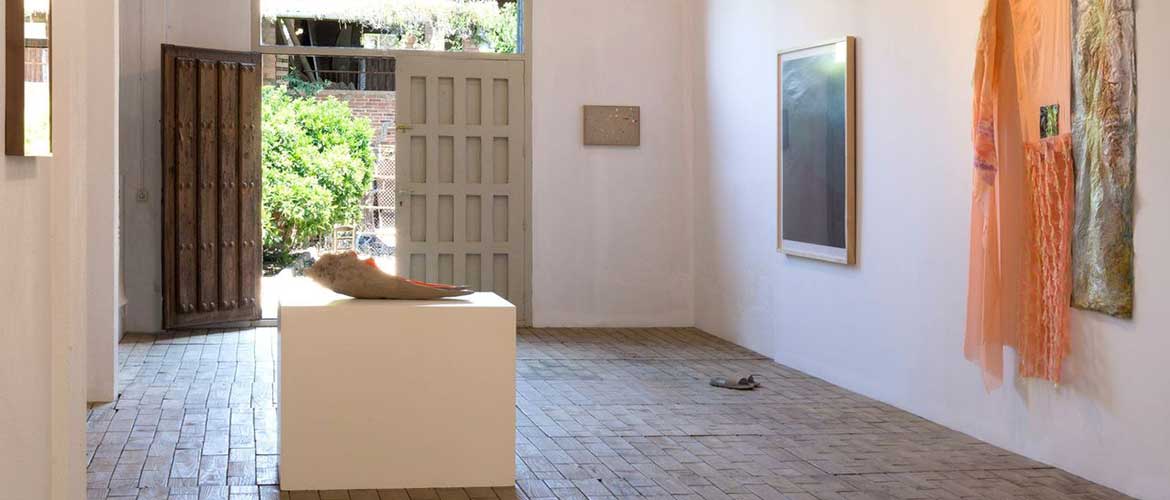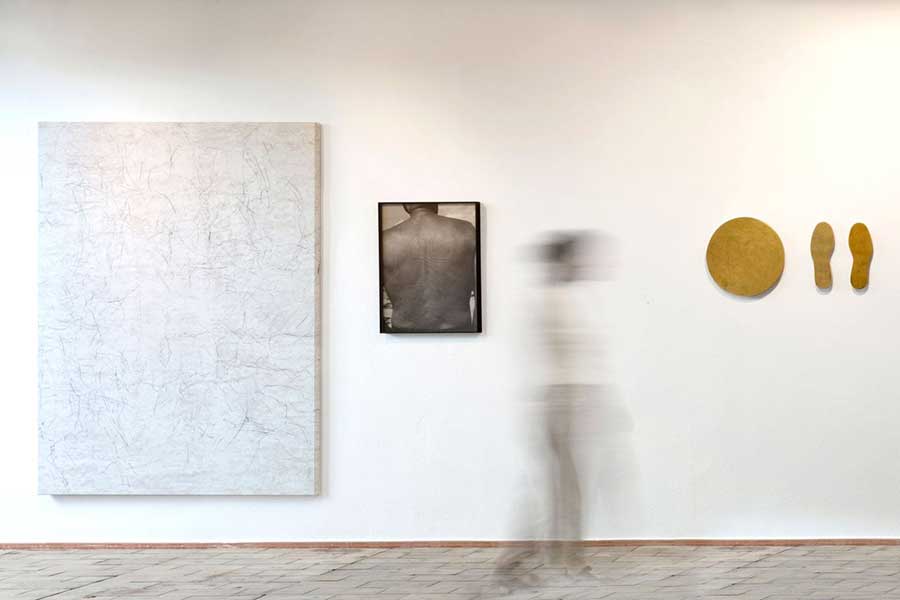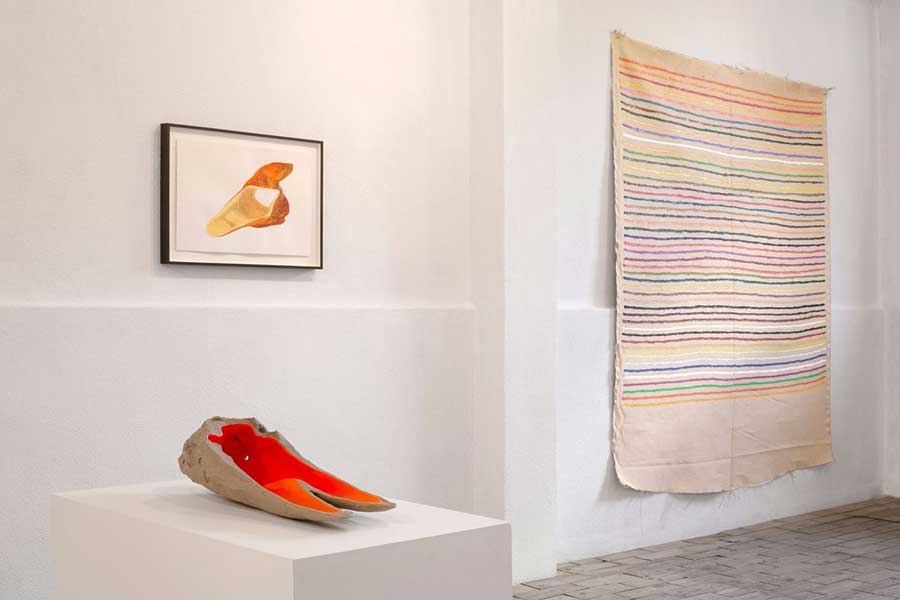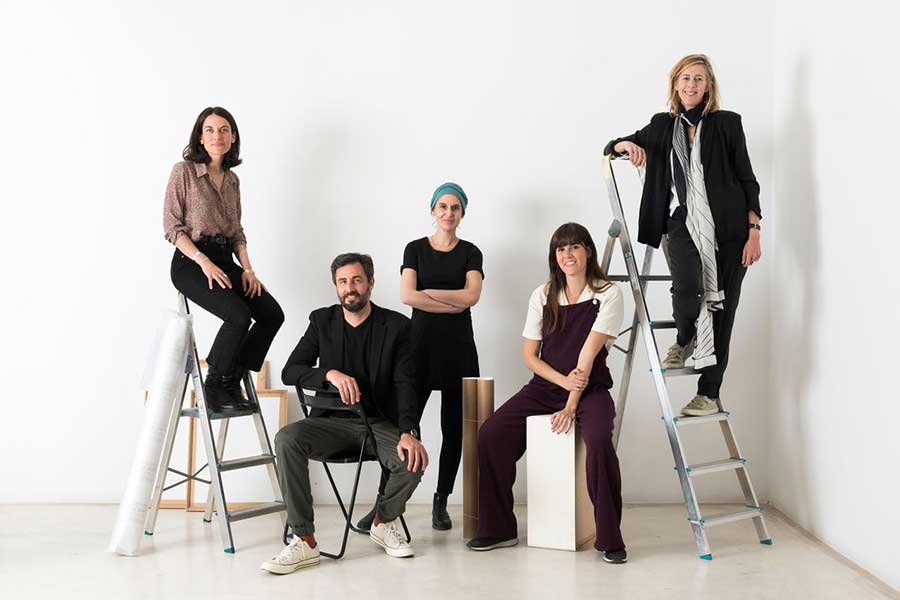
The three contemporary art galleries come together to bring contemporary art to the public in a face-to-face way.
After the rise of the relocation of art galleries worldwide, they promote this collective project in the Empordà, an idyllic setting with an artistic tradition.
This project joins the phenomenon marked by internationally recognized galleries, Hauser & Wirth, Lévy Gorby Gallery and Pace Gallery, among others.
The Fonteta pop-up will open on June 19th and will present a curated selection of works by contemporary artists, such as: Ana Mendieta, Alicia Kopf, Rosa Tharrats, Chema Madoz and Wilfredo Prieto, etc., until September 26th
We’re delighted to present a joint project by Bombon, Galeria Joan Prats and NoguerasBlanchard. Following the trend of other collaborative projects in which galleries relocated to open temporary spaces, away from big cities and their galleries of origin, the three galleries will join from June to September to present an exhibition in Fonteta, a small village in the Emporda region.
Following a year of cancelled art fairs, biennials, exhibitions, and virtual means of communication, the three galleries see it vital to join forces. They will bring contemporary art to the public, face to face, in a rural setting and with a relaxed spirit, advocating a more humane and sustainable way of life.
This project joins the phenomenon marked by the internationally recognized galleries, Hauser & Wirth, Lévy Gorby Gallery and Pace Gallery, among others, to bring art closer to its collectors by opening temporary pop-ups and new relocated art spaces found in: Menorca, Palm Beach, Aspen and the Hamptons. In the words of Dominique Lévy, co-founder of Levy Gorby Gallery: “You don’t travel to see the circus, the circus travels to you and it is different in each place you visit. We are the new nomads, for the moment.»
The exhibition, conceived in two chapters (the first opening June 19th and the second August 7th) brings together artists from three different generations. The proposal begins with a concept from the Emporda Parar la fresca (to take in fresh air) described by Josep Pla in the book Las Horas. The show selects the most cutting-edge contemporary artists: Joan Brossa, Hannah Collins, Anne-Lise Coste, Bernat Daviu, Enric Farrés Duran, Hernández Pijuan, Marine Hugonnier, Chema Madoz, Josep Maynou, Ana Mendieta, Jordi Mitjà, Perejaume, Wilfredo Prieto, Teresa Solar, Antoni Tàpies and Rosa Tharrats.

Exhibition “Parar la fresca” in Fonteta, Empordà.
Parar la fresca, as Pla states, is the summer habit of taking a chair out into the street, or up onto a rooftop as the sun begins to fall and simply letting time pass. Parar la fresca has modest intentions, to ignore the heavens, to be blissfully unaware of what the sky offers us whilst sounds flow from the sunset and the summer heat. As Pla argues, there is nothing more pleasurable or kind than falling asleep in the fresh twilight. But what if one does not fall sleep easily?
In Pla’s words, “The vast sky dome, they say, invites us to think. That is true. But think about what?” The renowned Emporda author concludes that “people who have a sense of ridicule think, before the heavens, that they know nothing at all.”

Exhibition “Parar la fresca” in Fonteta, Empordà.
Taking this question as a point of departure, works have been selected by artists addressing topics such as nature, landscape, time, contemplation, and the universe. They have been divided into two moments: Parar la fresca and Estar a la lluna. Two chapters of the same exhibition counts with the collaboration of the script from the writer Gabriel Ventura (1988) who describes the show’s soul: “Parar la fresca, sit on a chair – or on a rocking chair – and allow yourself to be entranced. All of a sudden, you can feel the song of the birds (silky, euphonic, oscillating), you see the slow and lazy bustle of the clouds, you pay attention to the streetlight on the corner, which until today had never been of interest. A new world of nuances opens up within the world of each day, faces and things are subverted; we may notice how espadrilles (or flip flops) gain weight as they carry us down our usual street, today different, but also identical, to itself. The weight of our legs, and of our spirit, forces us to observe our surroundings more carefully, to make our imaginations fly without lifting our feet off the ground.»
When we Parar la fresca, when we sit down and keep quiet – or become overly talkative – and we do nothing, magical things happen. Suddenly, everything becomes susceptible to being read as a work of art: the headlines in the newspaper, the landscape of a neighbour’s back, a cactus, or a fennel branch. The rocks levitate and the sea becomes a desert of blue sand. Thoughts, soft and malleable, start to infiltrate from all sides. They get muddled with the trees, with the facades and roofs of buildings, with the heat and the flies, they make fun of us and contradict us.”

Exhibition “Parar la fresca” in Fonteta, Empordà.
Exhibition text by Gabriel Ventura
«Parar la fresca, sit on a chair – or on a rocking chair – and allow yourself to be entranced. All of a sudden, you can feel the song of the birds (silky, euphonic, oscillating), you see the slow and lazy bustle of the clouds, you pay attention to the streetlight on the corner, which until today had never been of interest.
A new world of nuances opens up within the world of each day, faces and things are subverted; we may notice how espadrilles (or flip flops) gain weight as they carry us down our usual street, today different, but also identical, to itself. The weight of our legs, and of our spirit, forces us to observe our surroundings more carefully, to make our imaginations fly without lifting our feet off the ground.
When we ‘Parar la fresca’, when we sit down and keep quiet – or become overly talkative – and we do nothing, magical things happen. Suddenly, everything becomes susceptible to being read as a work of art: the headlines in the newspaper, the landscape of a neighbour’s back, a cactus, or a fennel branch. The rocks levitate and the sea becomes a desert of blue sand. Thoughts, soft and malleable, start to infiltrate from all sides. They get muddled with the trees, with the facades and roofs of buildings, with the heat and the flies, they make fun of us and contradict us.
‘Badar’ in Catalan means exactly this: to open yourself up, to bud like a flower, to detach yourself from reality, and to become enchanted by watching the world. Perhaps in English the closest translation would be “to space out” (or to zone out, in America). Don’t badar! We are often told as children. The prohibitions imposed in childhood could well explain our cultural repressions. Badar leads us astray from what is really important: work. When we are distracted we are not productive (or we are, but in a form that is erratic and out of control).
Even the semantics of the word seem to agree. Take, for example, the word ‘badadura’, which means to slit, or to cut. ‘Badar’ is also a way of piercing conventional time, cracking it apart and opening it up to new possibilities. In fact, without branching out further, the verb ‘badar’ also has a third meaning: to split. To pierce reality, and to glimpse at the difference in the repetition.
To ‘badar’ and to ‘parar la fresca’ are two sibling operations that involve, at the same time, a concentration and a disconnection. This, I would say, is the most revolutionary facet of the term ‘badar’, it is the most Kafkaesque, and the most difficult to explain. When you engage in ‘badar’, and you space out, you are there and you are not there, you are observing one thing butthinking about another, you go so deep into matter that (to try to capture it in some way) matter disappears, it becomes abstract, a completely new entity.
The ‘badoc’ (the person in a state of ‘badar’) is at an intermediate point between physical and spiritual matter, between the earth and the cosmos, on the highest rung of metaphysics. This person has their vision of reality so flat and devoid of expectation that background and form merge to become the same thing. The ‘badoc’ places their heavenly staircase on the ground, and, at street level, without moving from their chair, they travel and allow themselves to be enraptured by the universe.»
About Gabriel Ventura
Gabriel Ventura (1988) is a reversible writer who walks with the same naturalness through art, cinema and literature. In previous lives he was a neighbor of Serge Daney, assistant director of Maya Deren and heteronym of Fernando Pessoa. Poetry leads him to teach, to work with artists and filmmakers, with bookstores, galleries and museums, to research, translate and act.

From left to right: Joana Roda (Bombon Projects), Àlex Nogueras (NoguerasBlanchard), Patricia de Muga & Marta de Muga (Galería Joan Prats) & Rebeca Blanchard (NoguerasBlanchard).
About bombon projects
Bombon is a contemporary art gallery that opened in Barcelona in February 2017. This journey, which began 4 years ago, is shared with a group of national and international artists. Although the disciplines and themes of the gallery artists are varied, the feeling of community and exchange between the people who make up this project marks the identity of the gallery.
All this translates into an exhibition program that includes projects in the gallery space, offsite projects or the participation in international fairs, as well as an important program of parallel activities.
About noguerasblanchard
NoguerasBlanchard opened its first space in Barcelona in 2004. The gallery is dedicated to developing an interdisciplinary international program, reflecting a variety of conceptually motivated positions and practices. Its main objective is the commitment to the careers of the artists and a great implication in the production of works, as well as in external projects.
In September 2012 we opened a second exhibition space in Madrid in order to generate new audiences, contexts and possibilities.
In Barcelona, we relocated to an industrial space in L’Hospitalet de Llobregat in 2015. This space allows for projects that are more ambitious and here the program focuses mainly on thematic group exhibition cycles.
About joan prats
Galeria Joan Prats, Barcelona, has been since its opening in 1976 one of the pioneer galleries in the International contemporary scene, exhibiting and promoting the works of the artists it represents. The Gallery is committed to spread and to provide the lecture on the different languages used by the artists contributing thus to the realization of specific projects.
Exhibition calendar
Parar la fresca 19/06-03/08/2021
Estar a la lluna 07/08-26/09/2021
Location
c/ Empordà, 10, Fonteta, EmpordÀ
Press info:
Events Pati Núñez Agency
www.patinunezagency.com
